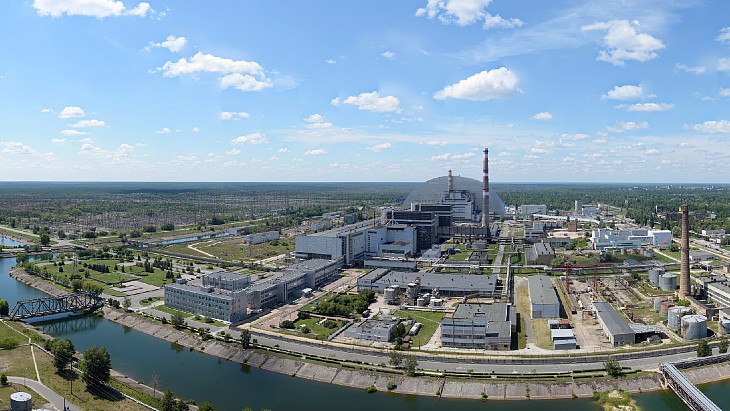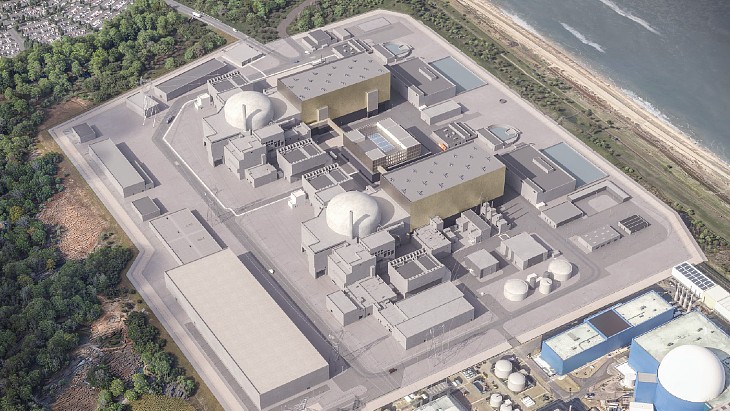Rafael Mariano Grossi, Director General of the International Atomic Energy Agency (IAEA) said the loss of power to the Chernobyl site "once again underlines risks to nuclear safety during the military conflict".
According to the IAEA, posting on its X account on Wednesday evening, the Chernobyl nuclear power plant lost connection to its Slavutych substation 330 kV line earlier in the day. "The site swiftly switched to alternate lines and power was restored, except for the New Safe Confinement (NSC), which covers the old sarcophagus built after the 1986 Chernobyl accident. Two emergency diesel generators are now supplying the NSC with electricity," the post said.
On Thursday morning it posted an update saying off-site power was restored to the New Safe Confinement at 08:33 local time on Thursday.
The New Safe Confinement
Chernobyl unit 4 was destroyed in the April 1986 accident (you can read more about it in the World Nuclear Association's Chernobyl Accident information paper) with a shelter (also known as the sarcophagus) constructed in a matter of months to encase the damaged unit, which allowed the other units at the plant to continue operating. It still contains the molten core of the reactor and an estimated 200 tonnes of highly radioactive material.
However it was not designed for the very long-term, and so the New Safe Confinement - the largest moveable land-based structure ever built - was constructed to cover a much larger area including the original shelter. The New Safe Confinement has a span of 257 metres, a length of 162 metres, a height of 108 metres and a total weight of 36,000 tonnes and was designed for a lifetime of about 100 years. It was built nearby in two halves which were moved on specially constructed rail tracks to the current position, where it was completed in 2019.
It was designed to allow for the eventual dismantling of the ageing makeshift shelter from 1986 and the management and containment of radioactive waste. It is also designed to withstand temperatures ranging from -43°C to +45°C, a class-three tornado, and an earthquake with a magnitude of 6 on the Richter scale. It is currently being temporarily repaired for the winter following damage caused by a drone strike in February - read more details about the repairs here.
The loss of external power to Chernobyl and its need to rely on emergency back-up diesel generators comes as the Zaporizhzhia Nuclear Power Plant is into its second week without external power supply, with it having to rely on its fleet of emergency diesel generators. Read more: IAEA talking to both sides as Zaporizhzhia power loss continues





_55530.jpg)
_42372.jpg)
_37521_70699.jpg)

_76087_55556.jpg)




